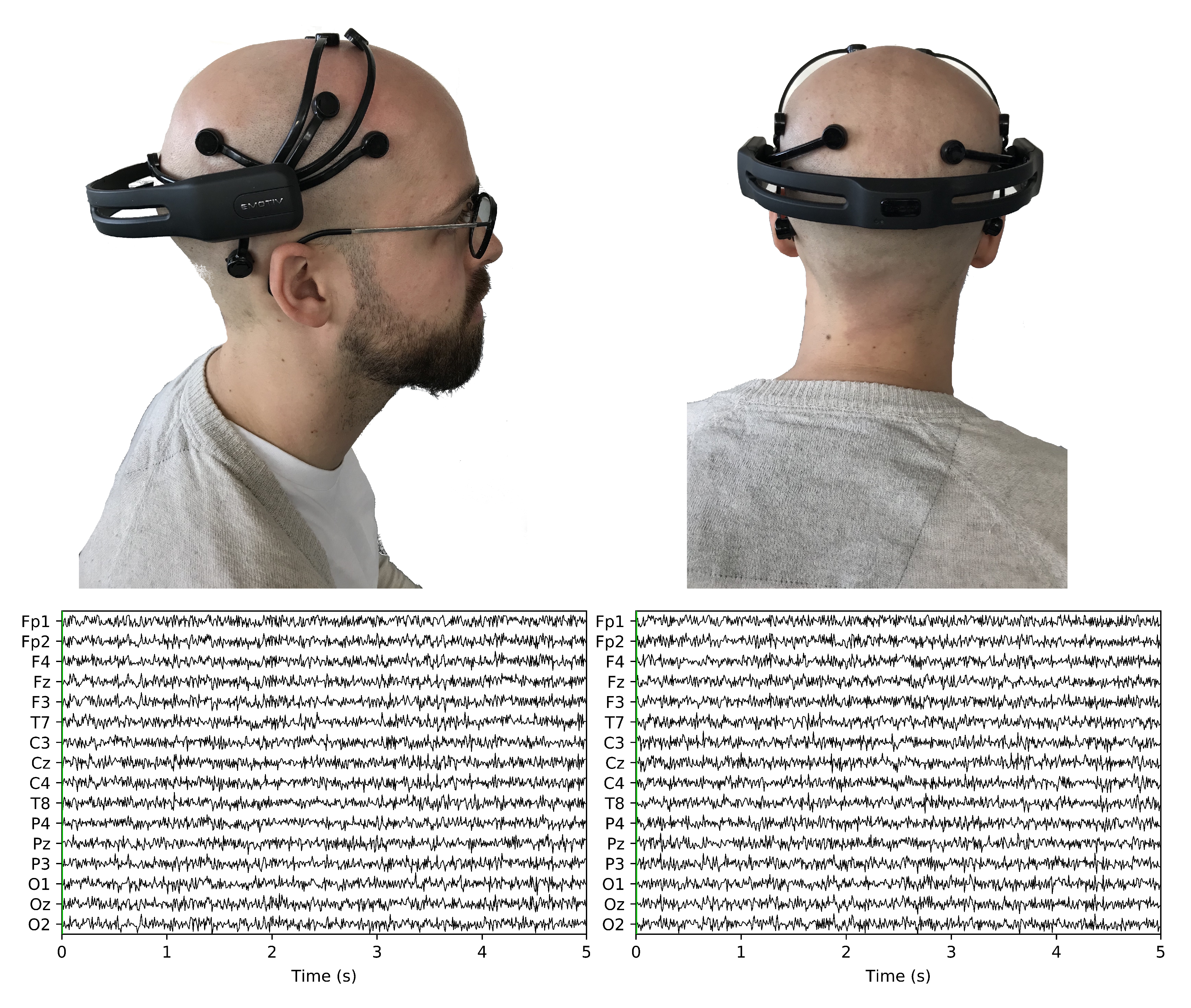

It is typically non-invasive, with the electrodes placed along the scalp. The resulting signal is the amplified difference between these two signals, eliminating the common unwanted signals detected by the surfaces. Electroencephalography ( EEG) is an electrophysiological monitoring method to record electrical activity on the scalp that has been shown to represent the macroscopic activity of the surface layer of the brain underneath. The bipolar configuration, with two measurement electrodes detects the electrical potentials in the specific scalp region with respect to a reference electrode, which should be placed in a region of low muscular activity. When a cap is too intrusive, only a limited number of channels are needed, or you’d like to synchronously record EEG and non-EEG biosignals, this is the perfect solution. The Electroencephalography (EEG) Sensor has been especially designed for both classic and localized EEG measurement.

#Eeg sensor Pc
For classic and localized EEG measurement offers the best prices on Computer Parts, PC Components, Laptops, Gaming Systems, Automotive Parts, Office Supplies, and more with fast shipping.Features two measurement electrodes and an elastic head band.Data Communication and Human Input Devices.An added requirement for EOG measurements is very good low frequency, or even dc, response. Image courtesy of Vermed, A division of Nissha Medical Technologies.Īll of the biopotential signals have low and even very low amplitude so instrument amplifiers are typically used to obtain a consistent, low noise signal. Their cost, as opposed to more expensive reusable electrodes, allows them to be disposable.

Silver (Ag) – silver chloride (AgCl) is a typical electrode material for ECG and other biopotentials. In fact, measurement of the retina within the eyes produces another type of measurement called an electroretinogram or ERG.Įlectrical performance and biologic response requirements for ECG electrodes are defined in the national standard ANSI/AAMI EC12:2000/(R)2005 Disposable ECG electrodes.

Finally, eye movement is measured by electrodes placed above, below and at the side of each eye. Pairs of electrodes are used on a specific muscle and a separate location is used as a reference for EMG measurements. It amplifies the small electrical voltages that are generated by brain cells (neurons) when they fire.
#Eeg sensor Bluetooth
Muse sends EEG signals to a computer or phone via Bluetooth for a wireless neurofeedback experience. The EEG sensor is an electroencephalograph sensor, or pre-amplifier, for measuring the brain’s electrical activity from the surface of the scalp. SourceĪn ECG determines heart activity by measuring signals from electrodes placed on the torso, arms and legs. 2) headband contains 7 calibrated sensors on the forehead, 2 behind the ears, and 3 reference sensors. The table shows the values for each biopotential group according to the article “Biopotentials and Electrophysiology Measurements” in The Measurement, Instrumentation, and Sensors Handbook. However, the amplitude and bandwidth of the measurements vary for each of these. An electrocardiogram (ECG or EKG), electroencephalogram (EEG), electromyogram (EMG) and electrooculogram (EOG) all measure biopotentials, the electrical output of human activity.


 0 kommentar(er)
0 kommentar(er)
